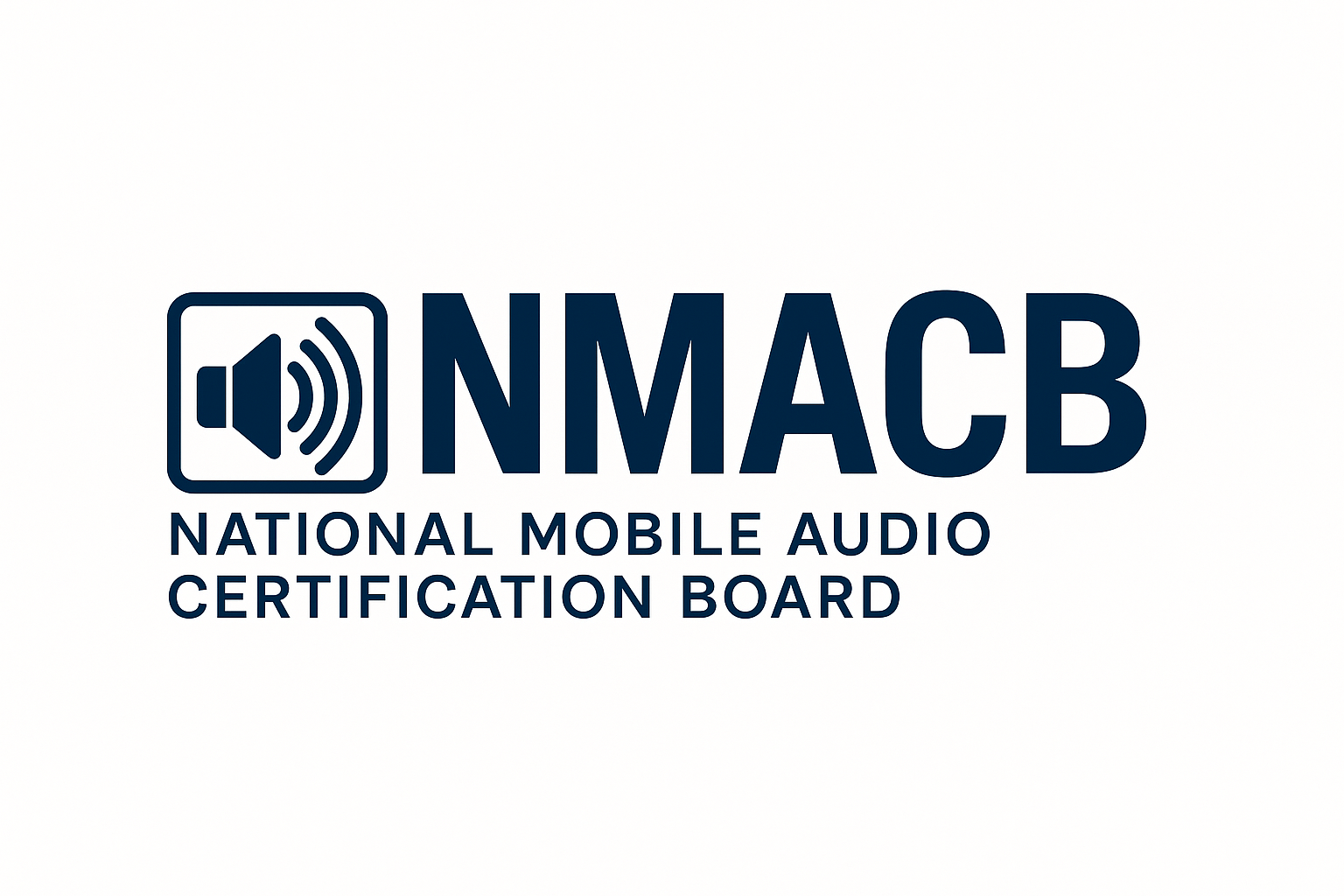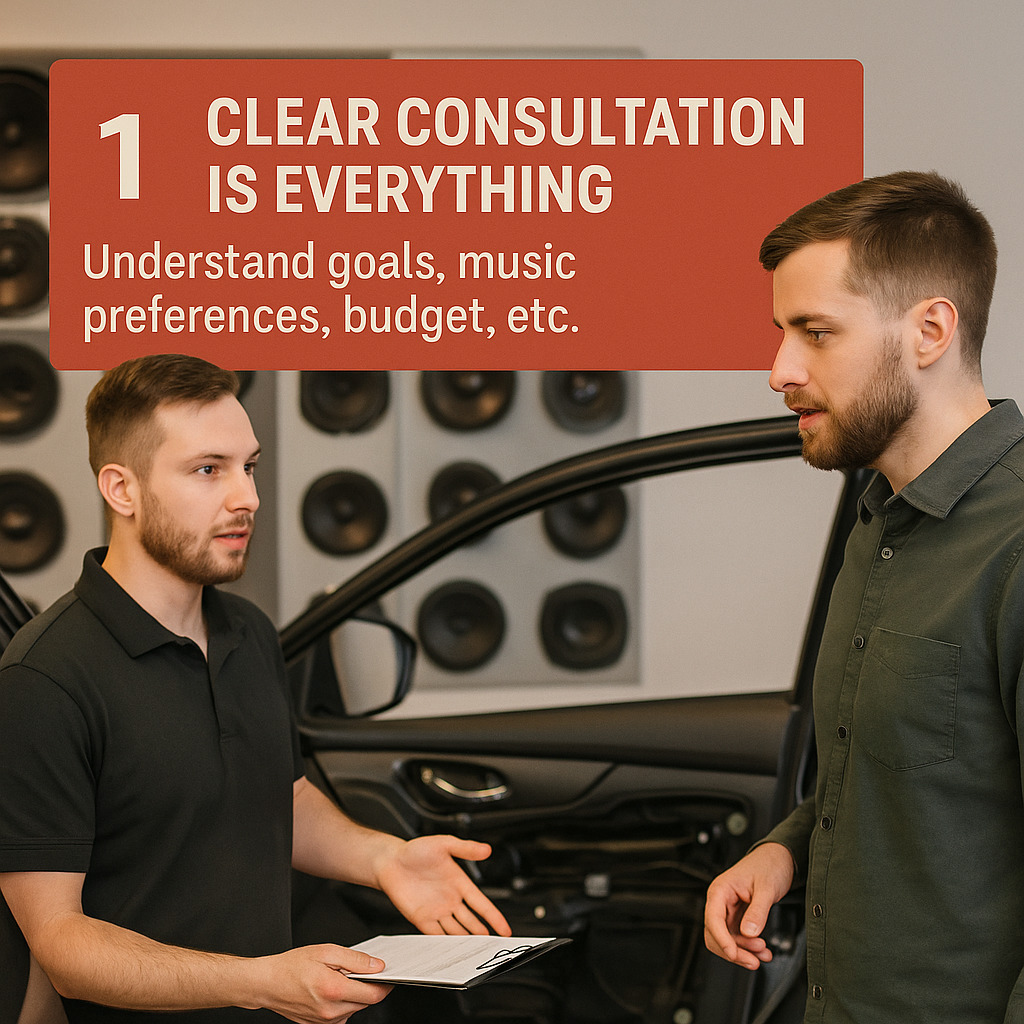Your cart is currently empty!
In today’s world of online reviews, YouTube installs, and social media highlights, customer expectations for car audio upgrades can be sky-high—and sometimes a little unrealistic. As a professional car audio shop, one of the biggest challenges isn’t just wiring up an amp or tuning a DSP—it’s managing what a customer expects versus what’s actually possible for their budget, vehicle, and goals.
Here’s a behind-the-scenes look at how serious car audio shops handle expectations and keep things smooth, professional, and satisfying for everyone involved.
1. Clear Consultation Is Everything
It all starts with the consultation. A good shop doesn’t just sell equipment—they ask questions.
What kind of music do you listen to? Do you want clarity or bass? How loud is too loud? What’s your budget?
By understanding the customer’s goals, shops can guide them toward the right equipment and avoid selling something that sounds great on paper but doesn’t fit their needs—or their car.
2. Honesty About Budget vs. Performance
Many customers walk in thinking a $200 setup will sound like a concert hall. Quality audio takes investment, especially when it involves custom fabrication, sound treatment, or digital tuning.
The best shops explain the why behind pricing:
- Why a DSP might be more important than another subwoofer
- Why cheap amps often underperform or overheat
- Why quality wiring isn’t just “extra labor,” it’s essential
This level of transparency helps customers make informed decisions and sets realistic performance expectations.
3. Showing the Process Builds Trust
Customers often don’t understand what goes into a clean, professional install—routing wires safely, tuning crossovers, avoiding engine noise, integrating with factory electronics.
Shops that take time to explain or even show the process (either in person or on social media) build trust and credibility. It shows you’re not just bolting stuff in—you’re crafting a system.
4. Document Everything
Reputable shops protect themselves by:
- Writing clear estimates and invoices
- Listing what’s being installed and what isn’t
- Noting what was tested before and after the install
This paperwork prevents confusion when customers say “You guys touched it and now my check engine light is on.” It also makes it easier to explain what future upgrades are possible.
5. Underpromise, Overdeliver
The golden rule of service: it’s better to surprise a customer with how good their system sounds than to promise something you can’t fully deliver.
Experienced shops don’t sell dreams—they sell results. That might mean recommending a two-stage build, or saying no to customers who want to push their factory alternator beyond its limits. Integrity matters more than a fast sale.
6. Handling the “Expert” Customer
Some customers come in with advice from forums, friends, or TikTok creators. Good shops don’t dismiss them—but they gently correct misinformation and educate.
You don’t win someone over by telling them they’re wrong. You win by showing them a better way and proving it with your work.
Conclusion: It’s About Partnership, Not Just Sales
At the end of the day, great car audio isn’t just about gear—it’s about communication. The best shops treat customers like partners in the build process, not just buyers. By setting clear expectations, being honest about costs and outcomes, and educating along the way, they build long-term trust.
When expectations are managed right, the result isn’t just a great sound system—it’s a satisfied customer who becomes a fan for life.
Need help planning your next car audio upgrade? Talk to a shop that listens first—and installs second.

